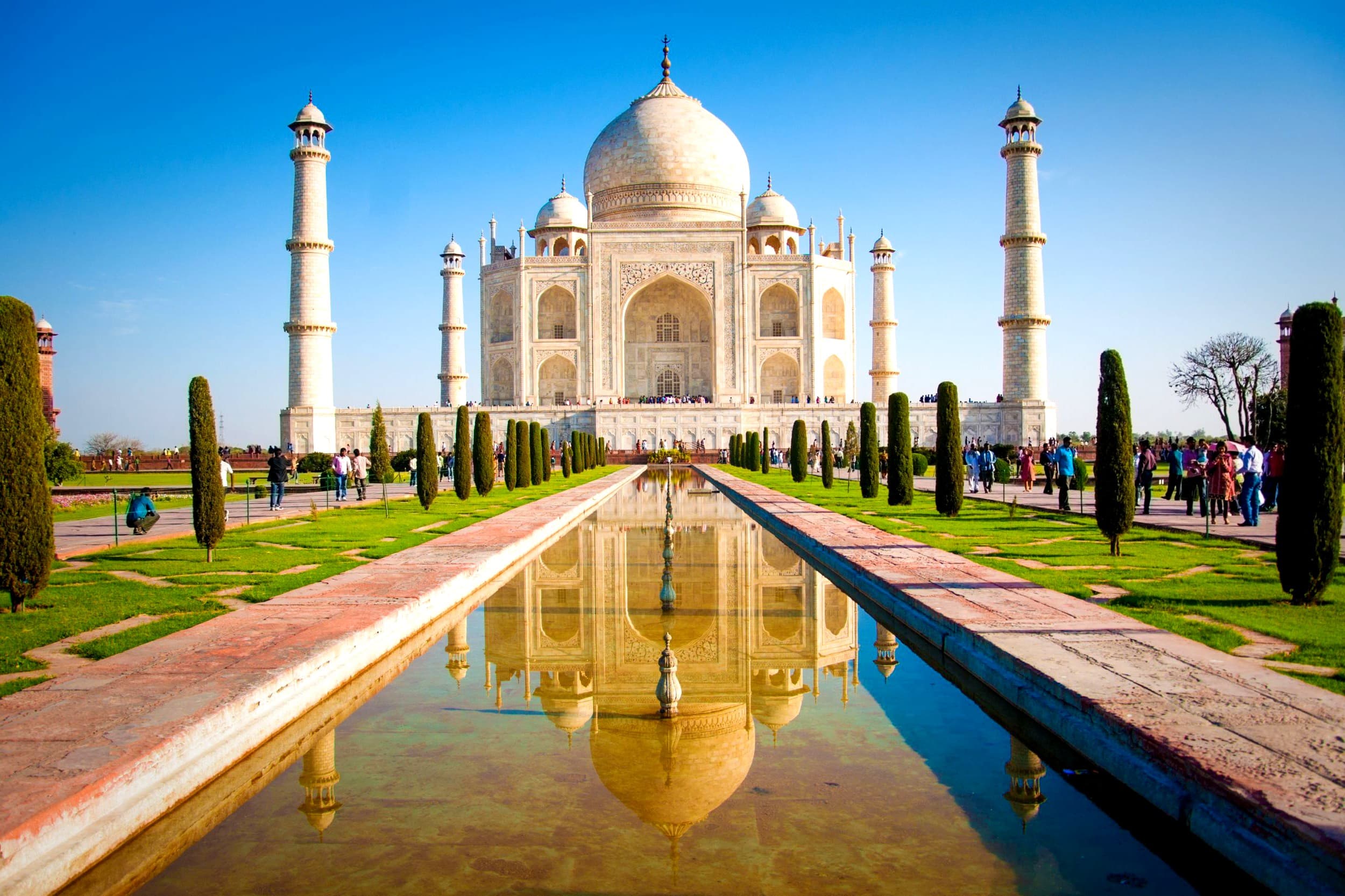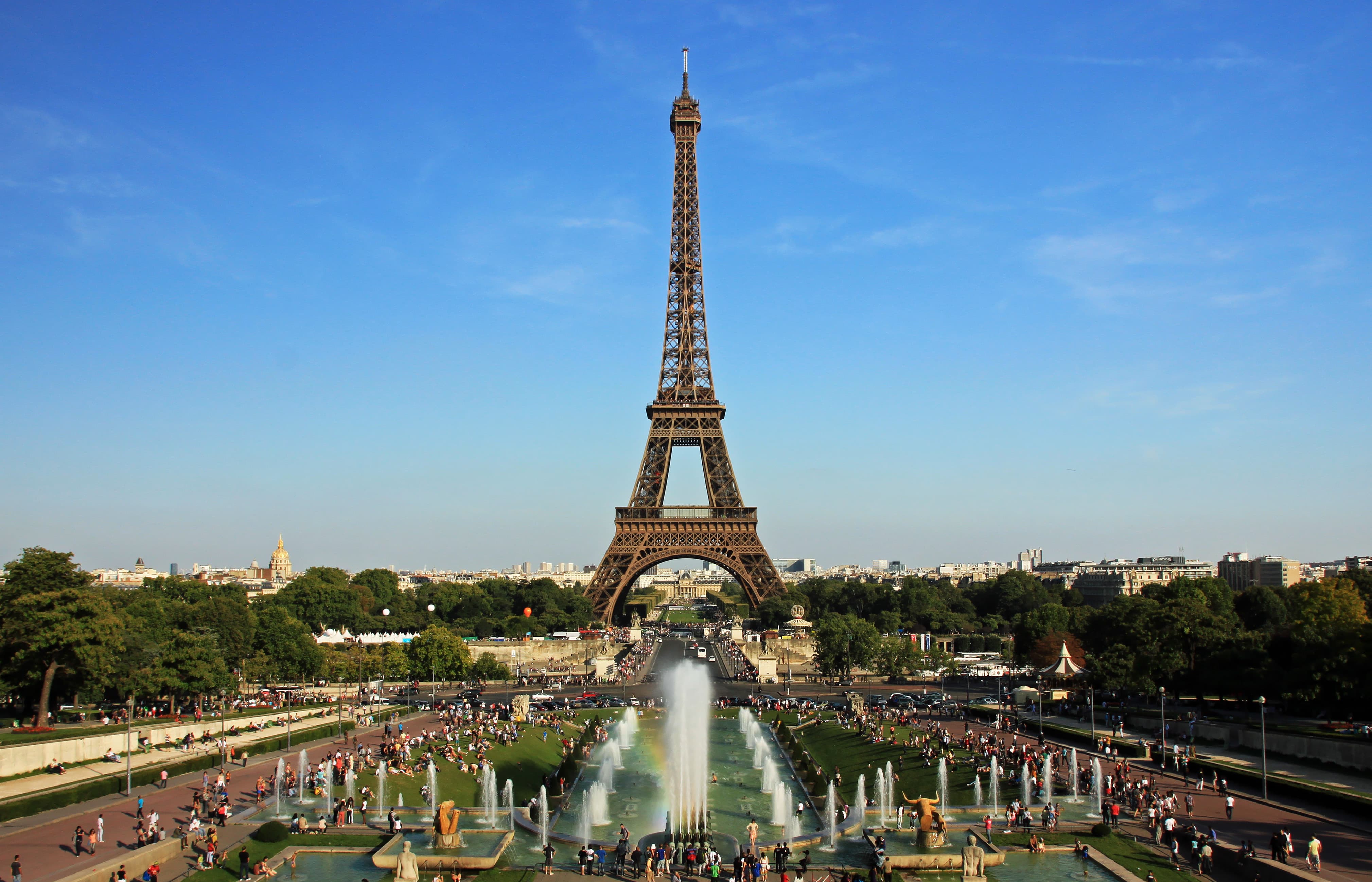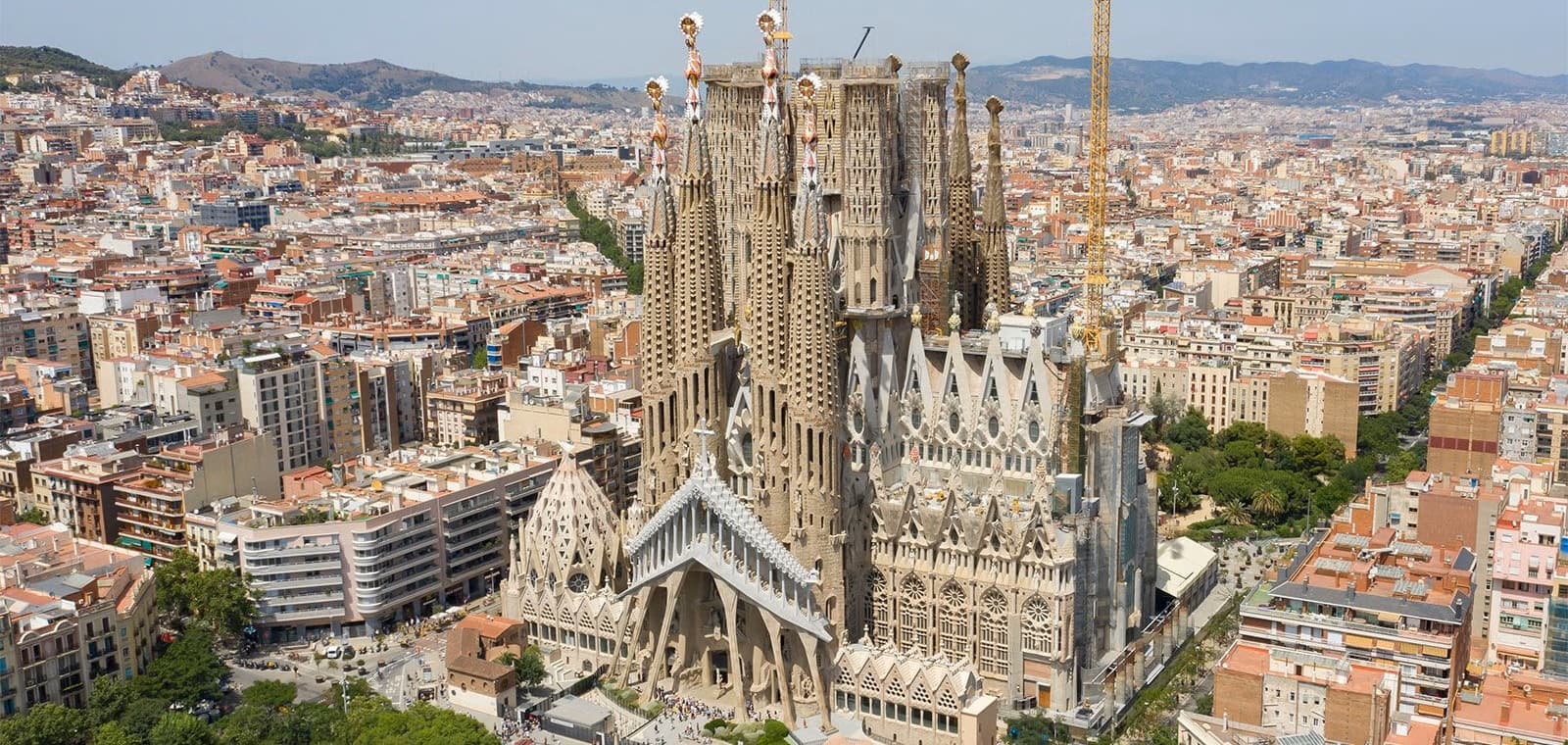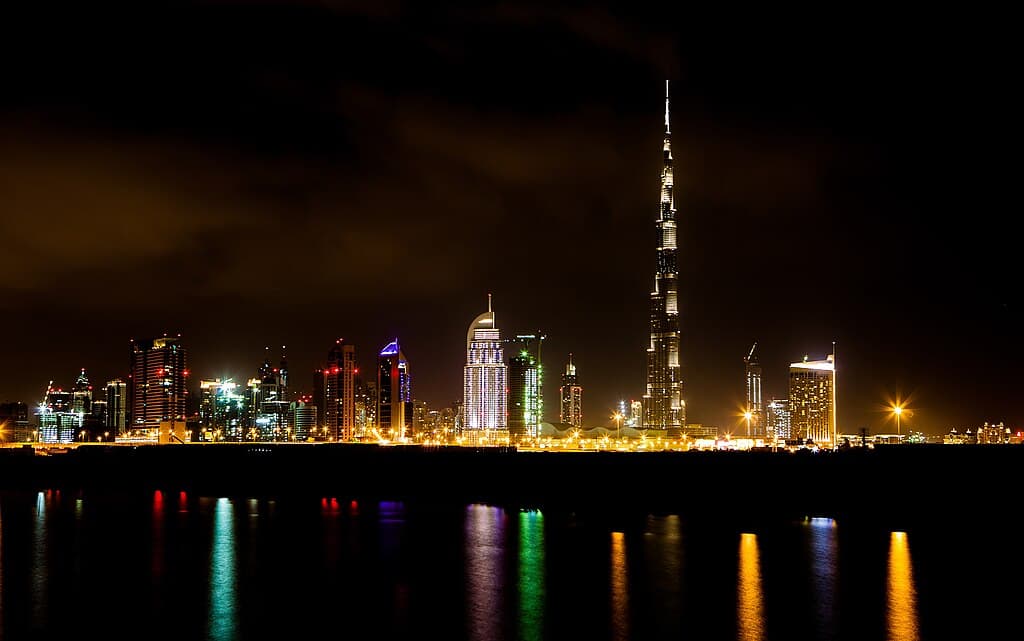Top 5 Architectural Marvels as Works of Art
It's hard to say what the absolute “top 5” architectural marvels are, there are so many incredible buildings around the world, each special in its own way. This list includes five famous and widely admired structures that show how architecture can be more than just construction, it can be true art. From ancient wonders to modern masterpieces, these buildings were chosen to show a mix of different styles, time periods, and creative ideas. Whether you love history, travel, or just cool buildings, these are some of the most beautiful and inspiring places ever built.
Taj Mahal (Agra, India, 1643)
The Taj Mahal is one of the most iconic and beautiful buildings in the world, located in the city of Agra, India. It was commissioned in 1632 by Emperor Shah Jahan as a tribute to his wife Mumtaz Mahal, who died during childbirth. Heartbroken by her death, Shah Jahan wanted to create a monument unlike any other, a symbol of eternal love that would stand the test of time.
Made entirely of white marble, the Taj Mahal reflects light in breathtaking ways, glowing pink at dawn, dazzling white during the day, and golden under the moonlight. Its massive central dome is surrounded by four slender minarets, all built with perfect symmetry. The structure blends Persian, Islamic, and Indian architectural styles, creating a unique and harmonious design that continues to inspire architects around the world.
One of the most fascinating features of the Taj Mahal is its detailed decoration. The walls are inlaid with semi-precious stones like jade, lapis lazuli, and turquoise, forming floral patterns and Arabic calligraphy from the Quran. Despite being centuries old, the craftsmanship is so fine that many of these details still appear sharp and vibrant today. Surrounding the mausoleum are beautifully arranged gardens with reflecting pools, designed to represent paradise.
Today, the Taj Mahal is recognized as a UNESCO World Heritage Site and attracts millions of visitors each year. The Taj Mahal never fails to leave a lasting impression, earning its place as one of the most admired and photographed monuments on Earth.
Eiffel Tower (Paris, France, 1889)
The Eiffel Tower is one of the most recognizable landmarks in the world, but when it was first built in 1889, many people in Paris didn't like it. Designed by French engineer Gustave Eiffel, the tower was created for the World's Fair to celebrate the 100th anniversary of the French Revolution. At the time, some artists and writers called it an eyesore and wanted it taken down. Despite the early criticism, the tower quickly became a symbol of progress and modern design.
Standing 324 meters (1,063 feet) tall, the Eiffel Tower was the tallest structure in the world until the Chrysler Building was completed in New York in 1930. Made from over 18,000 iron parts held together by more than 2.5 million rivets, the tower is an incredible example of 19th-century engineering. Its open lattice structure, which looks delicate from a distance, was carefully designed to withstand strong winds and heavy use.
The tower has three viewing platforms, and visitors can take elevators or climb over 600 steps to reach the second level. From the top, the panoramic views of Paris are breathtaking, especially at sunset or when the city is lit up at night. Over 7 million people visit the Eiffel Tower each year, making it one of the most visited monuments in the world. It is also beautifully illuminated every evening with thousands of sparkling lights that twinkle for five minutes every hour after dark.
Beyond its impressive height and structure, the Eiffel Tower has come to represent the heart and soul of Paris. Once considered a temporary structure, it is now a permanent and beloved part of the city's skyline.
Sagrada Família (Barcelona, Spain, 1882-Present)
The Sagrada Família in Barcelona might look like a cathedral, but it's actually a colossal work in progress that first broke ground in 1882. Conceived by a bookseller named Josep María Bocabella, the project took on its unforgettable form when a young architect named Antoni Gaudí took over in 1883 and began weaving natural shapes and symbols into every stone.
Look up inside and you'll see tree-like pillars branching out like a forest canopy to support soaring parabolic arches. No two columns are exactly alike, Gaudí believed straight lines and right angles were too rigid for a building inspired by nature. Sunlight pours through walls of stained glass in "jewel" tones, bathing the interior in shifting hues throughout the day.
Although Gaudí spent over forty years pouring his heart into the Sagrada Família, he knew it would outlast him, he once said it would take 200 years to finish. Today, his tomb lies in the crypt below, and teams of architects and artisans continue to translate his intricate models into stone and glass.
Visitors from around the globe come to marvel at its three grand façades, Nativity, Passion, and Glory, each bursting with sculpted scenes of Christ's life and Christian symbolism. With 18 towers planned (representing the Twelve Apostles, the Virgin Mary, the Four Evangelists, and Jesus himself), the tallest spire will rise over 170 meters, making it the world's tallest church when it's finally complete, hopefully around 2026, marking the centenary of Gaudí's death.
Sydney Opera House (Sydney, Australia, 1973)
Perched on Bennelong Point by Sydney Harbour, the Sydney Opera House was conceived by Danish architect Jørn Utzon after his bold sail-inspired design won an international competition in 1957. Utzon's vision broke away from conventional theatre layouts, placing a series of interlocking vaulted “shells” atop a massive podium to create a building that appears to float on the water.
These shell-like roofs are formed from precast concrete sections, each one part of a perfect sphere, giving the impression of sails billowing in the wind. The striking silhouette contrasts brilliantly with the deep blue of the harbour and sky, a modern expressionist landmark that became a UNESCO World Heritage Site in 2007.
From afar, the shells gleam bright white, but up close you can see over one million ceramic tiles, glossy white and matte cream, meticulously arranged in a subtle chevron pattern. These tiles were specially developed in Sweden and took years of testing to achieve the perfect sparkle without causing glare.
By day, the Opera House reflects golden sunlight off its curved forms; by night, dramatic lighting transforms it into a glowing beacon on the water. Beyond its breathtaking beauty, the building is also at the forefront of sustainability, featuring self cleaning roof tiles and a seawater heating and cooling system that help it achieve top environmental ratings.
Burj Khalifa (Dubai, UAE, 2010)
Rising to a staggering 828 meters (2,717 feet), the Burj Khalifa in Dubai is the tallest building in the world. Designed by architect Adrian Smith of Skidmore, Owings & Merrill, construction began in January 2004 and the tower officially opened in January 2010. Its mixed use design houses luxury residences, corporate offices, and even the upscale Armani Hotel.
The tower's distinctive stepped silhouette and tripartite floor plan were inspired by the native Hymenocallis desert flower, also called the spider lily, found across the UAE. Islamic architectural patterns further influenced its Y shaped base, creating a harmonious blend of tradition and modern design that tapers gracefully skyward. Clad in over 26,000 reflective glass panels and aluminum fins, its façade glistens under the desert sun by day and transforms into a luminous beacon by night.
The Burj Khalifa set multiple world records on completion, including the tallest freestanding structure and the building with the most floors. Inside, 57 elevators, including double deck cabins traveling up to 10m/s, whisk visitors to the “At The Top” observation decks on floors 124, 125, and 148. Its outdoor deck on level 148 held the Guinness World Record for highest open air observation deck at 555.7m until recent years.
Since opening, the Burj Khalifa has become an enduring symbol of Dubai's ambition and architectural innovation. It has starred in blockbuster films like Mission: Impossible - Ghost Protocol and hosts spectacular New Year's Eve fireworks displays watched around the globe. Its record breaking height and striking light shows ensure it remains a must see marvel for millions of visitors every year.




